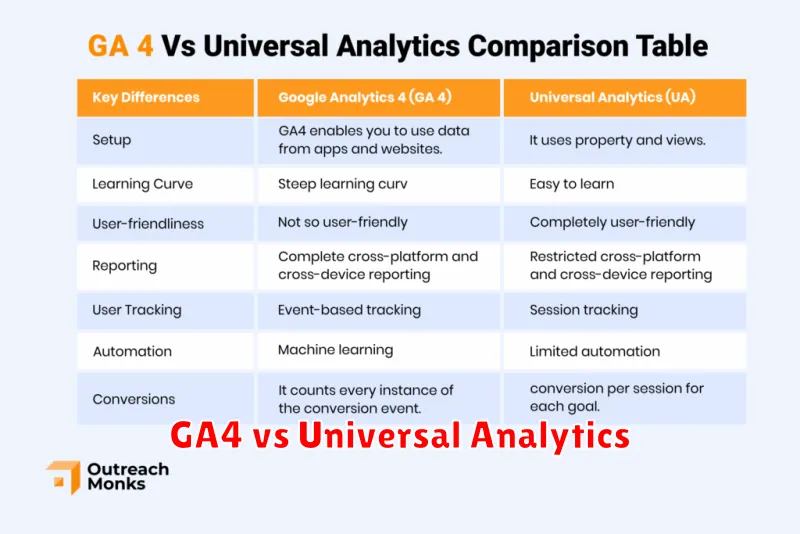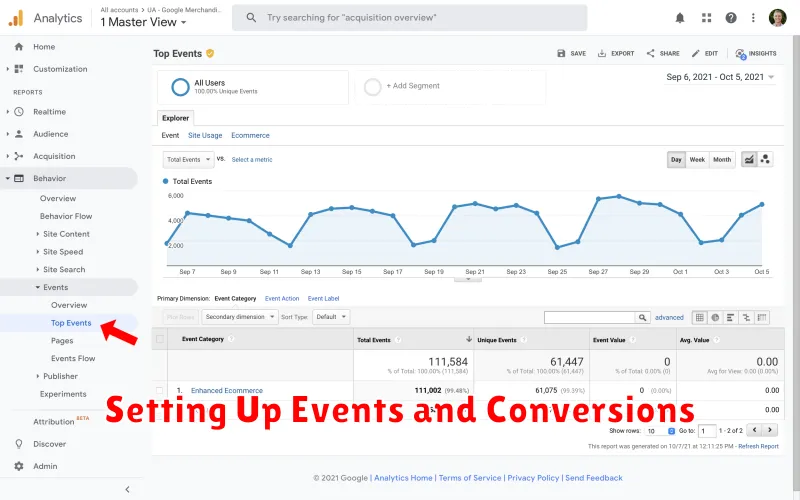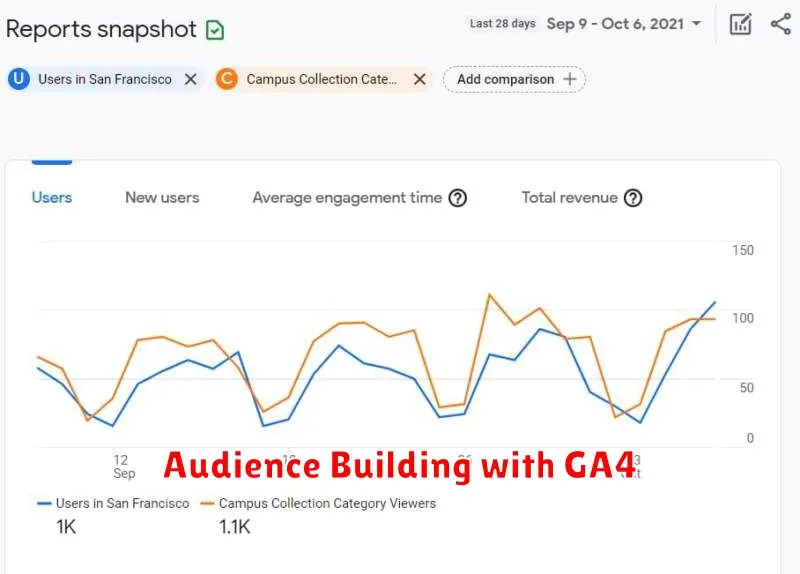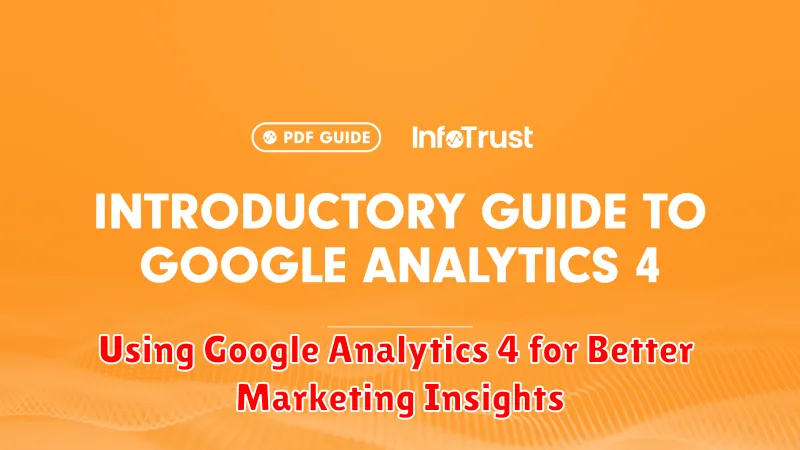In today’s dynamic digital landscape, leveraging data-driven insights is paramount for effective marketing. Google Analytics 4 (GA4) emerges as an indispensable tool, empowering businesses to gain a comprehensive understanding of customer behavior across their website and app. This powerful analytics platform offers a wealth of information, providing marketers with the ability to make informed decisions and optimize their strategies for maximum impact. Unlocking the potential of GA4 is crucial for staying ahead of the curve and achieving marketing success.
This article delves into the core functionalities and benefits of utilizing Google Analytics 4 for enhanced marketing insights. We will explore how GA4‘s advanced features, such as event-based tracking, cross-platform analysis, and machine learning capabilities, can provide a deeper understanding of customer journeys and engagement. By harnessing the power of GA4, marketers can refine their targeting, personalize user experiences, and ultimately drive better results. Learn how to effectively leverage Google Analytics 4 to elevate your marketing performance and achieve your business objectives.
GA4 vs Universal Analytics

Google Analytics 4 (GA4) marks a significant shift from Universal Analytics (UA). Understanding the key differences between these two platforms is crucial for leveraging the full potential of your web analytics.
One of the most fundamental differences lies in how data is collected and processed. UA relies primarily on pageviews and sessions, while GA4 focuses on events and user engagement across platforms. This event-based model allows for more comprehensive cross-platform analysis, including websites and apps.
Another key distinction is the way they handle user identification. UA predominantly utilizes cookies, which are becoming increasingly less reliable due to evolving privacy regulations and browser restrictions. GA4 adopts a more flexible approach by leveraging multiple identity spaces, including user IDs and Google signals, offering more robust and privacy-centric user identification.
Furthermore, GA4 integrates machine learning to fill data gaps caused by cookie consent and restrictions, providing more complete insights even with evolving privacy landscapes. This predictive capability helps with tasks like churn probability and potential revenue generation.
Setting Up Events and Conversions

In Google Analytics 4 (GA4), events are the foundation of measurement. Every user interaction, from page views to button clicks, is captured as an event. Properly configuring these events is crucial for gaining actionable insights.
GA4 offers automatically collected events, which track basic interactions without any additional setup. However, to gain a deeper understanding of specific user behavior, you need to set up enhanced measurement events or custom events.
Enhanced measurement allows you to easily track interactions like scrolls, outbound clicks, site search, and video engagement with minimal configuration. Simply enable these options in your GA4 settings.
For more granular tracking, you can create custom events. These allow you to define specific actions you want to monitor, providing highly tailored data for your marketing analysis. Marking key events as conversions allows you to track the effectiveness of your marketing efforts in driving desired outcomes.
Tracking User Journeys
Understanding user journeys is crucial for effective marketing. Google Analytics 4 (GA4) provides enhanced tracking capabilities to visualize how users interact with your website or app.
GA4’s event-based data model allows for more granular tracking of user actions, painting a clearer picture of the steps users take, from initial engagement to conversion (or exit). This data helps identify pain points, drop-off areas, and opportunities for optimization.
Pathing reports in GA4 offer visualizations of common user flows, allowing you to analyze the most frequent paths taken by users to complete specific actions, such as making a purchase or submitting a form. This insight can inform strategic decisions regarding content placement, website navigation, and overall user experience.
Audience Building with GA4

Google Analytics 4 (GA4) offers robust audience building capabilities that go beyond traditional analytics. Leveraging machine learning and enhanced user identification, GA4 empowers marketers to create highly targeted audiences for personalized campaigns.
Unlike Universal Analytics, GA4 focuses on events and parameters, providing more granular data for audience definition. You can segment users based on specific actions, such as product views, purchases, or engagement with particular content.
Predictive audiences are a key feature of GA4. These audiences use machine learning to identify users likely to churn or purchase, allowing for proactive engagement strategies.
Furthermore, GA4 integrates seamlessly with other Google marketing platforms, facilitating direct activation of these audiences in advertising campaigns. This allows marketers to optimize ad spend and improve return on investment.
Using Explorations Report
The Explorations report is a powerful tool within Google Analytics 4 that allows for flexible and in-depth analysis of your data. It goes beyond the standard reports, providing a more customizable and visual way to explore user behavior and uncover actionable insights.
With Explorations, you can create custom reports by dragging and dropping dimensions and metrics. This allows you to analyze specific segments of your audience, identify trends, and understand complex user journeys. Techniques such as cohort analysis, funnel exploration, and pathing analysis are available within this section.
Explorations offers several visualization options including tables, charts, and graphs. This flexibility allows you to present data in a clear and concise manner, making it easier to communicate findings and drive data-informed decisions.
By leveraging the Explorations report, marketers can gain a deeper understanding of their audience, identify areas for improvement in their marketing campaigns, and ultimately drive better results.
Connecting GA4 to Google Ads

Connecting your Google Analytics 4 (GA4) and Google Ads accounts allows for a more comprehensive understanding of customer behavior across your website and advertising campaigns. This integration provides valuable insights into how users interact with your ads and how those interactions translate into website actions and conversions.
Key benefits of linking GA4 and Google Ads include improved conversion tracking, enhanced remarketing capabilities, and more accurate attribution modeling. By linking these platforms, you gain a unified view of the customer journey, from ad click to conversion.
The connection process is straightforward, involving a few key steps within the respective platforms’ interfaces. Ensure you have administrative access to both your GA4 and Google Ads accounts. Once connected, data will begin flowing between the two, providing a richer data set for analysis and optimization.

